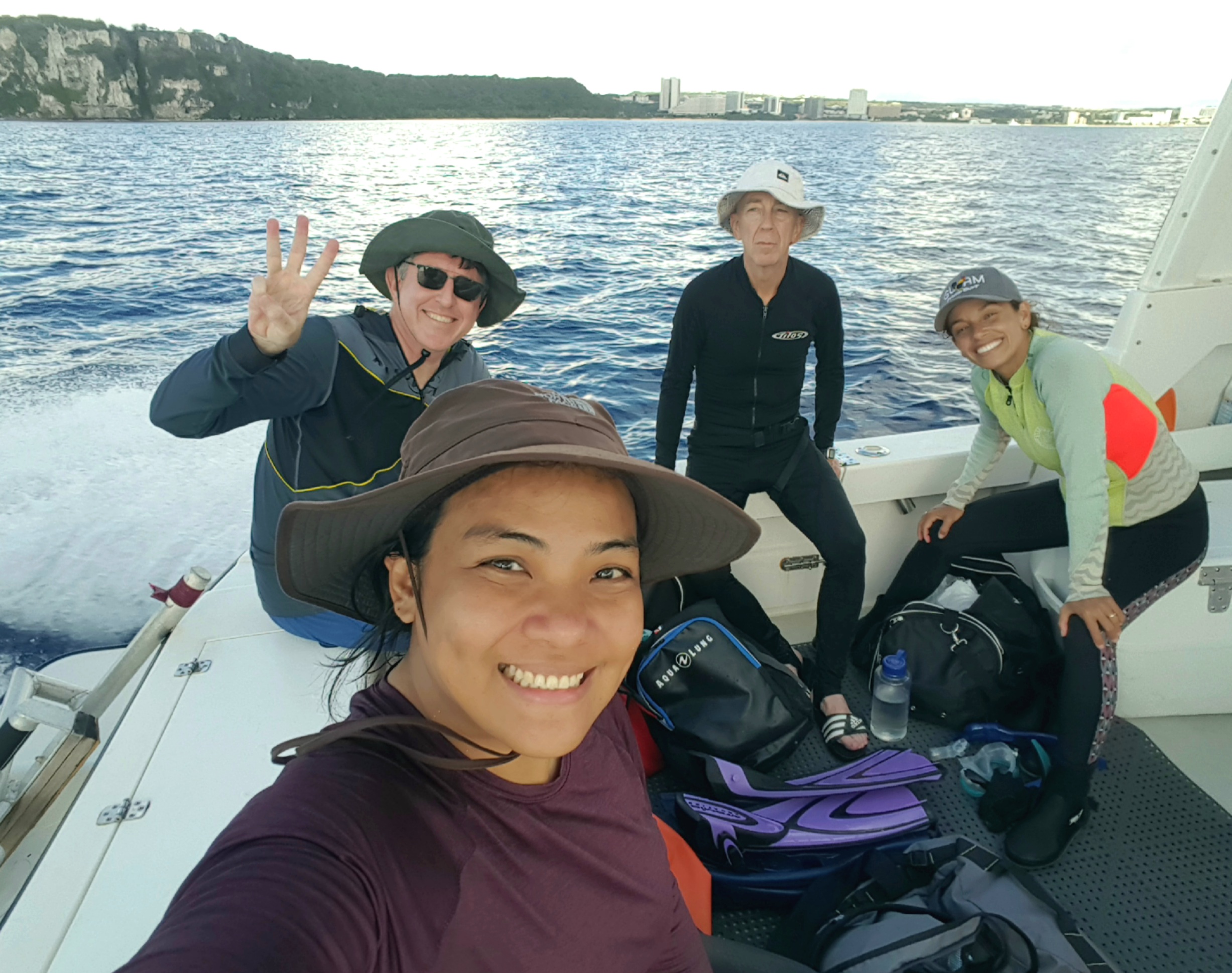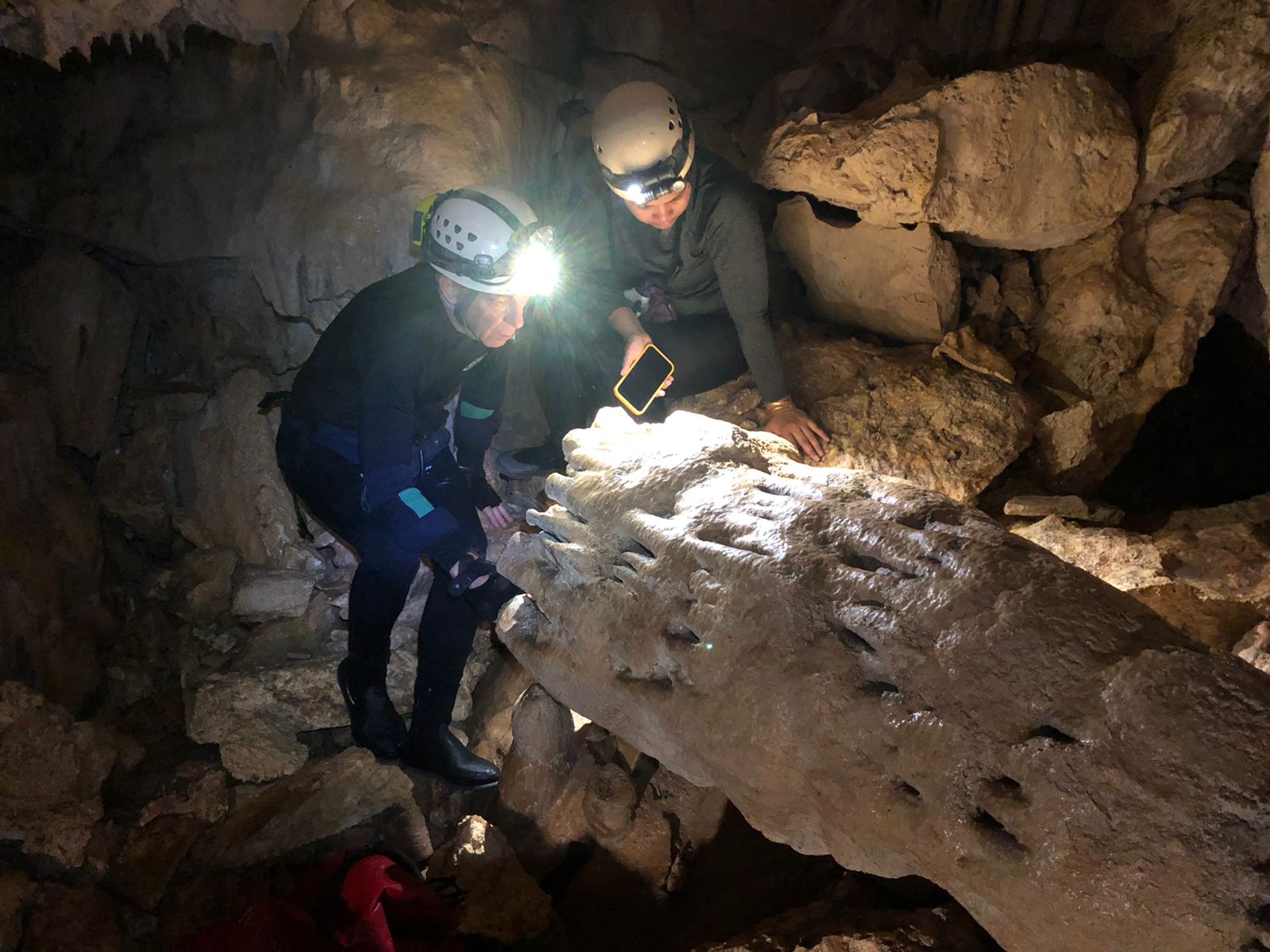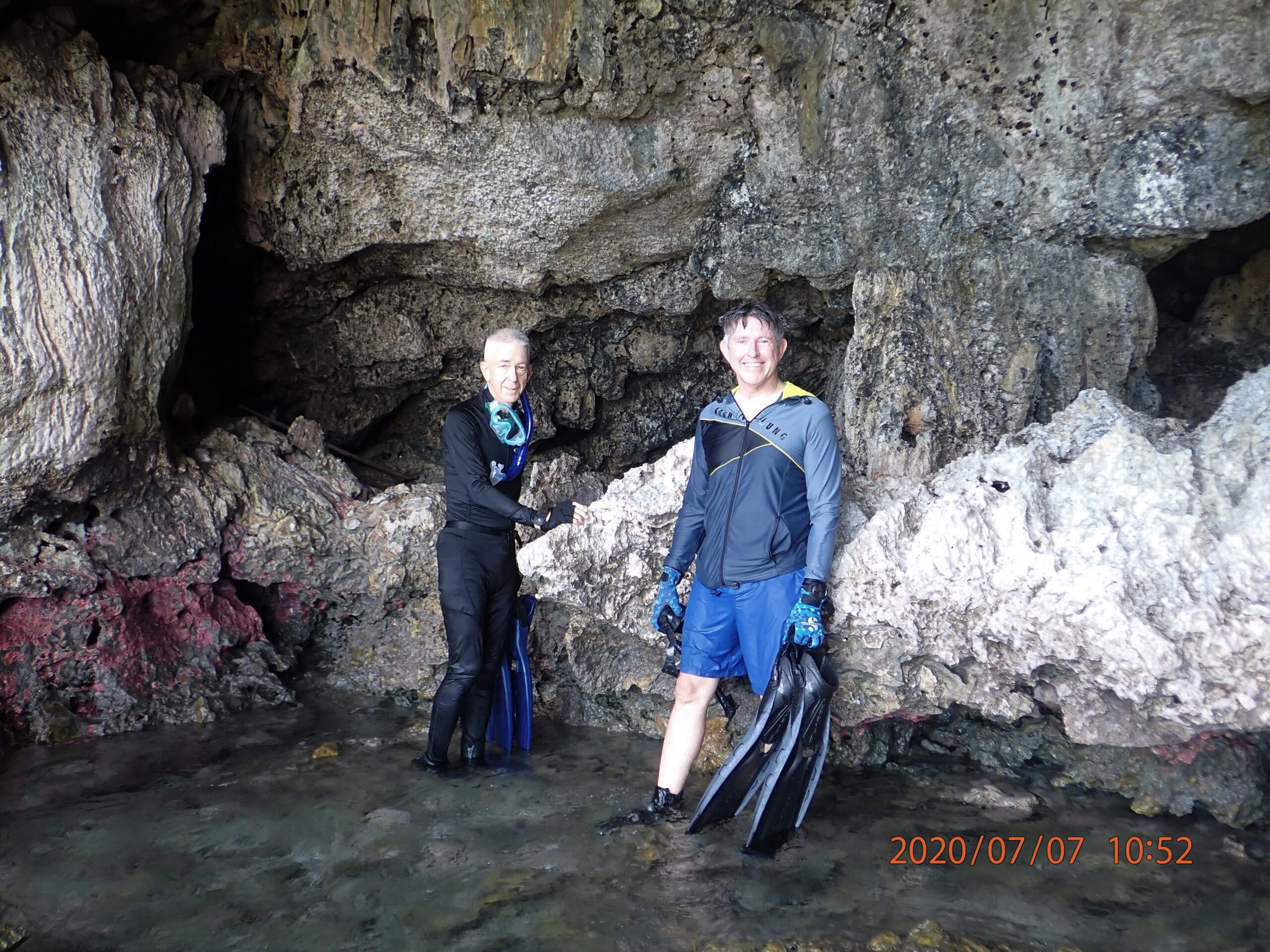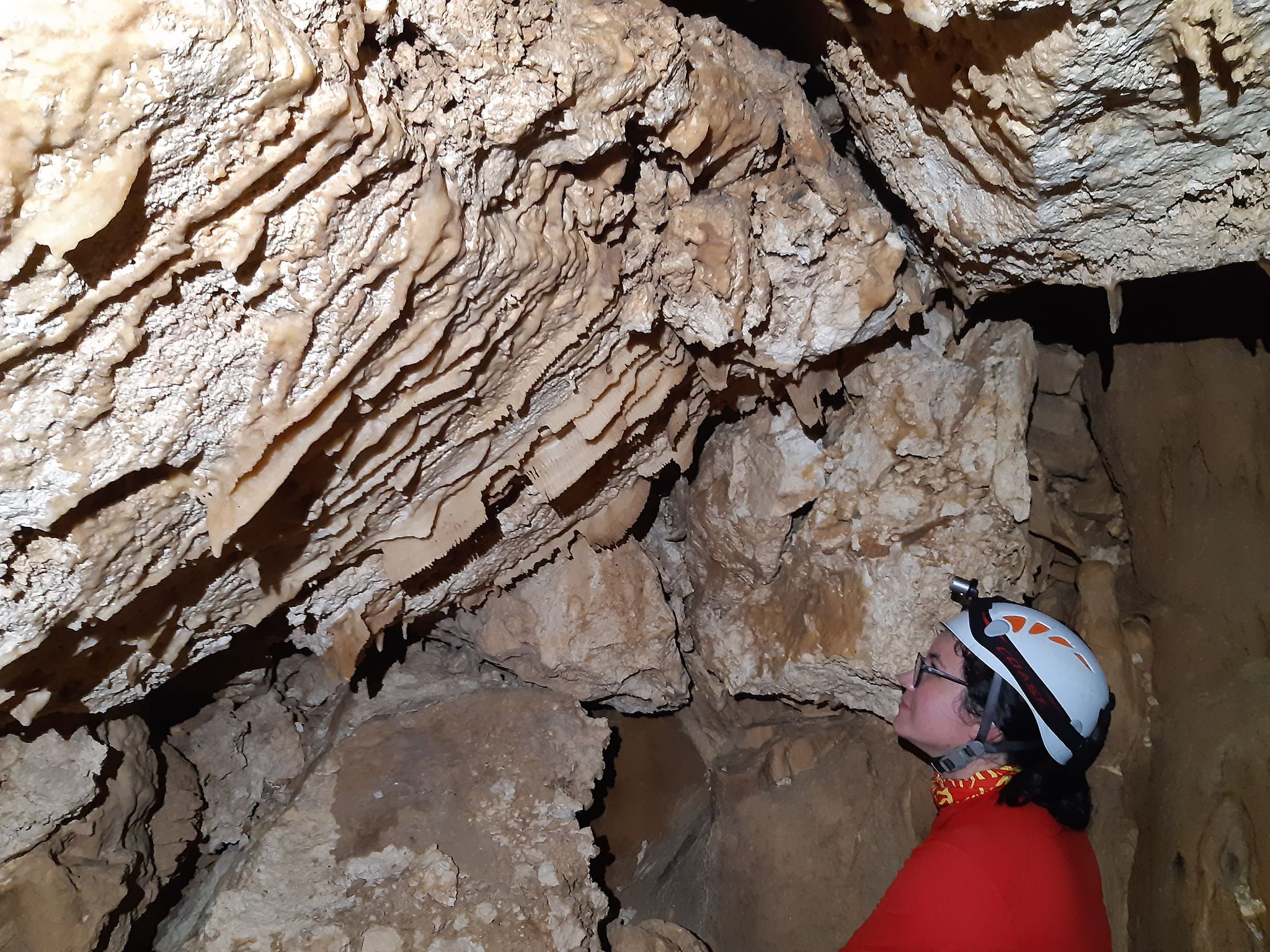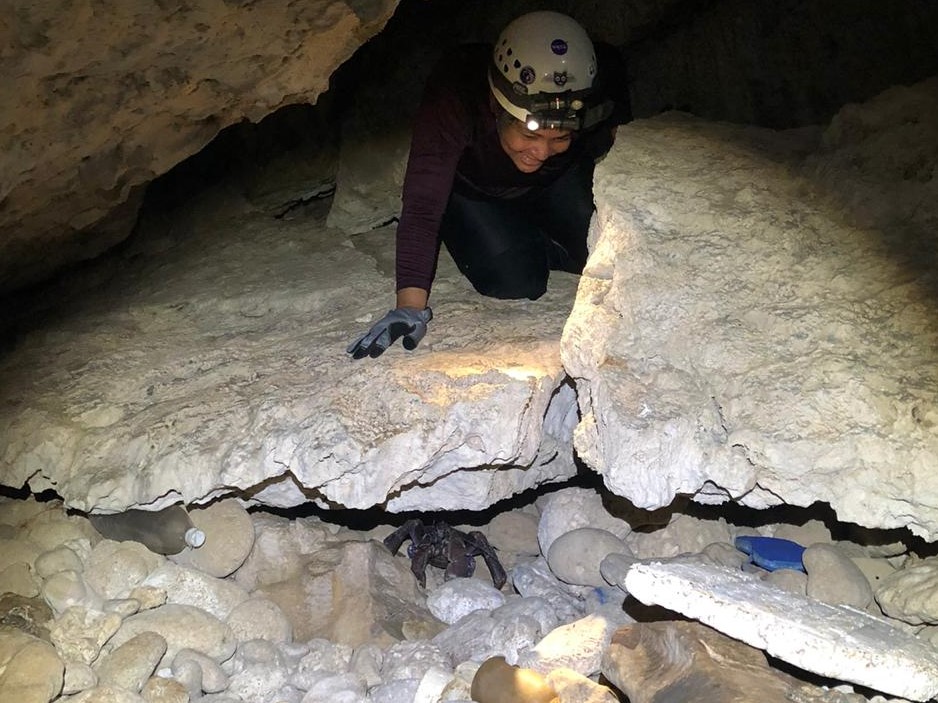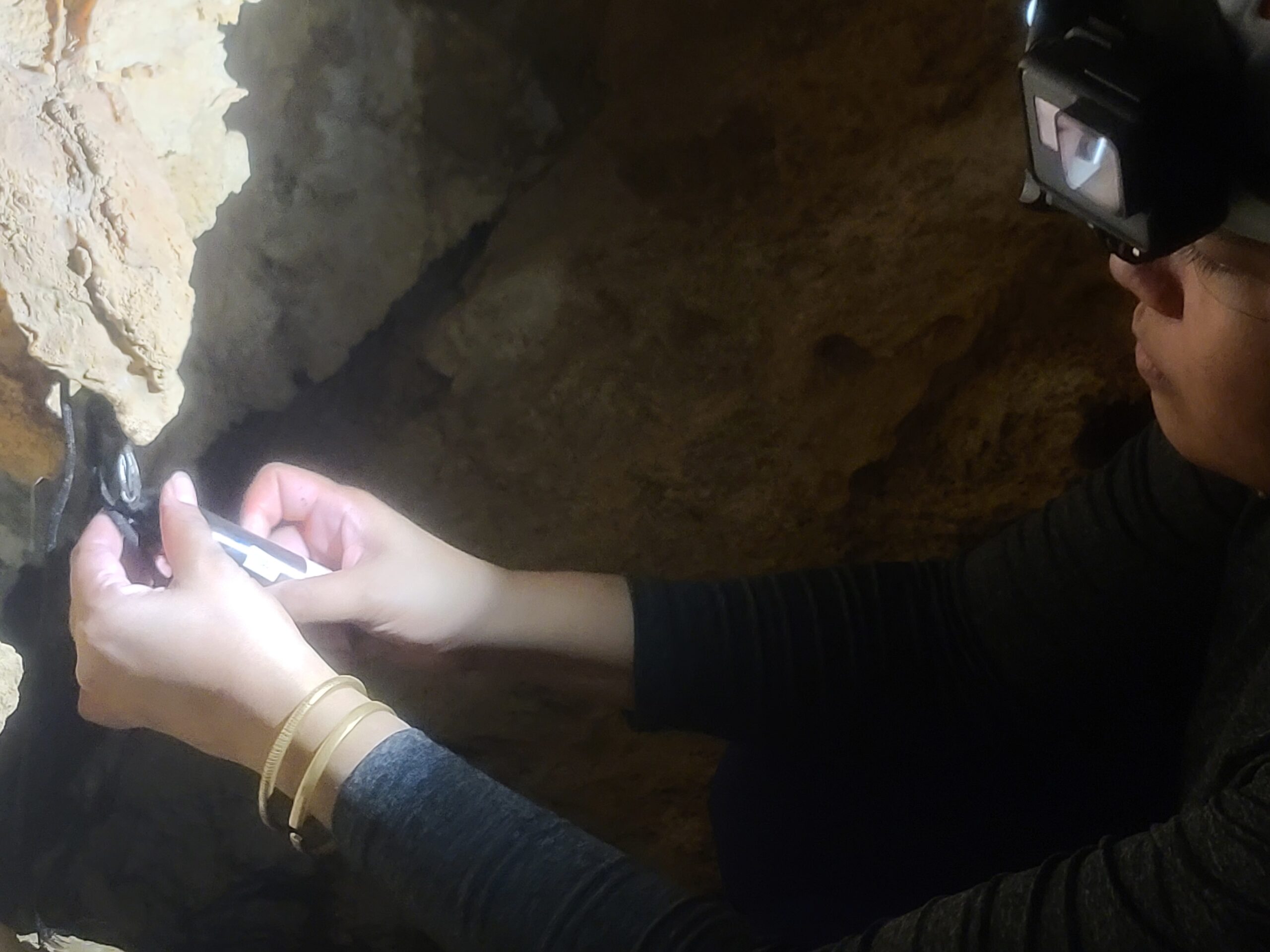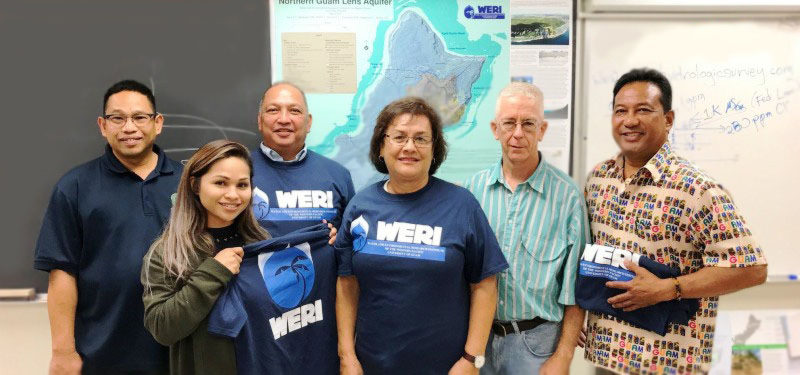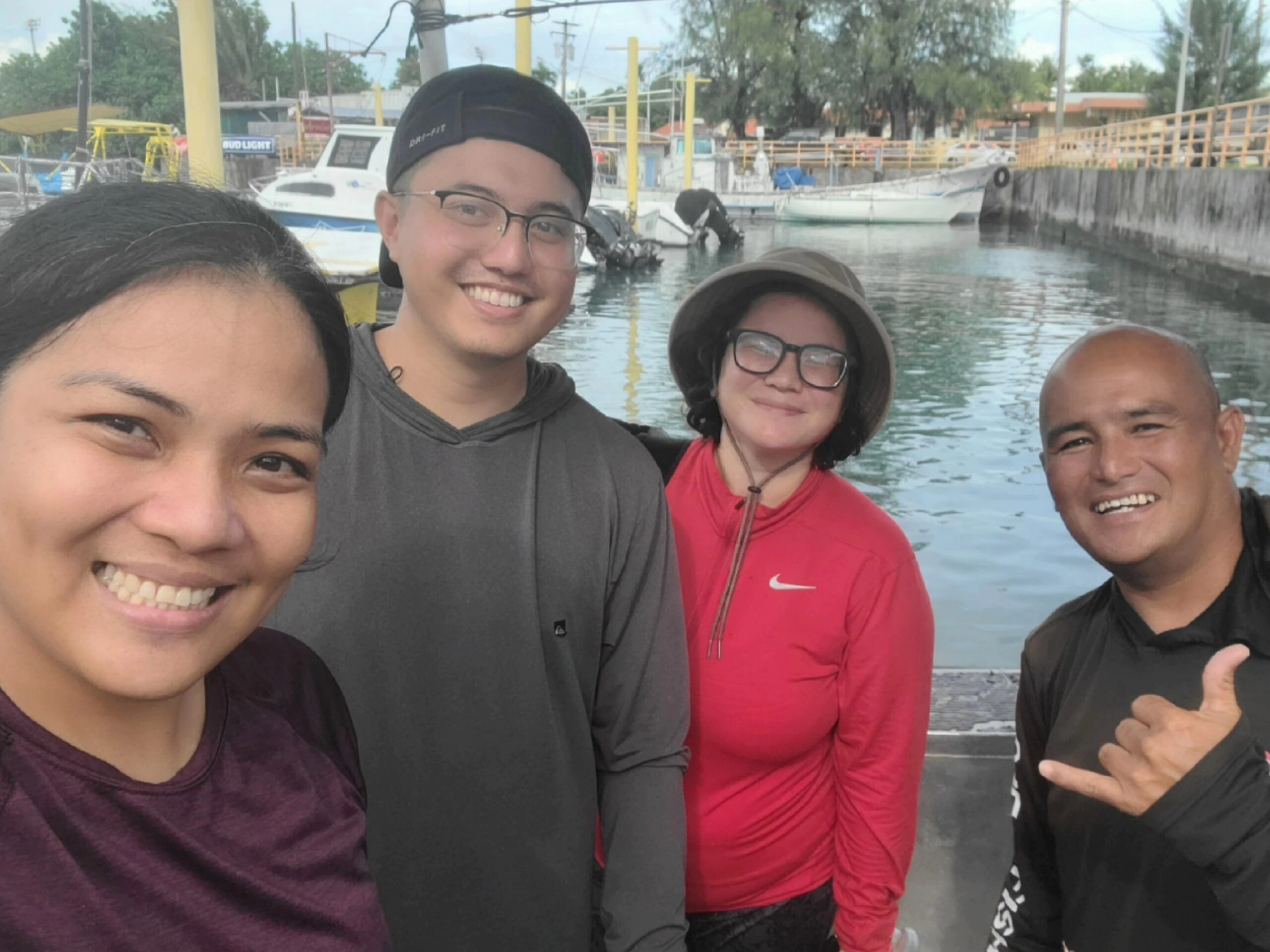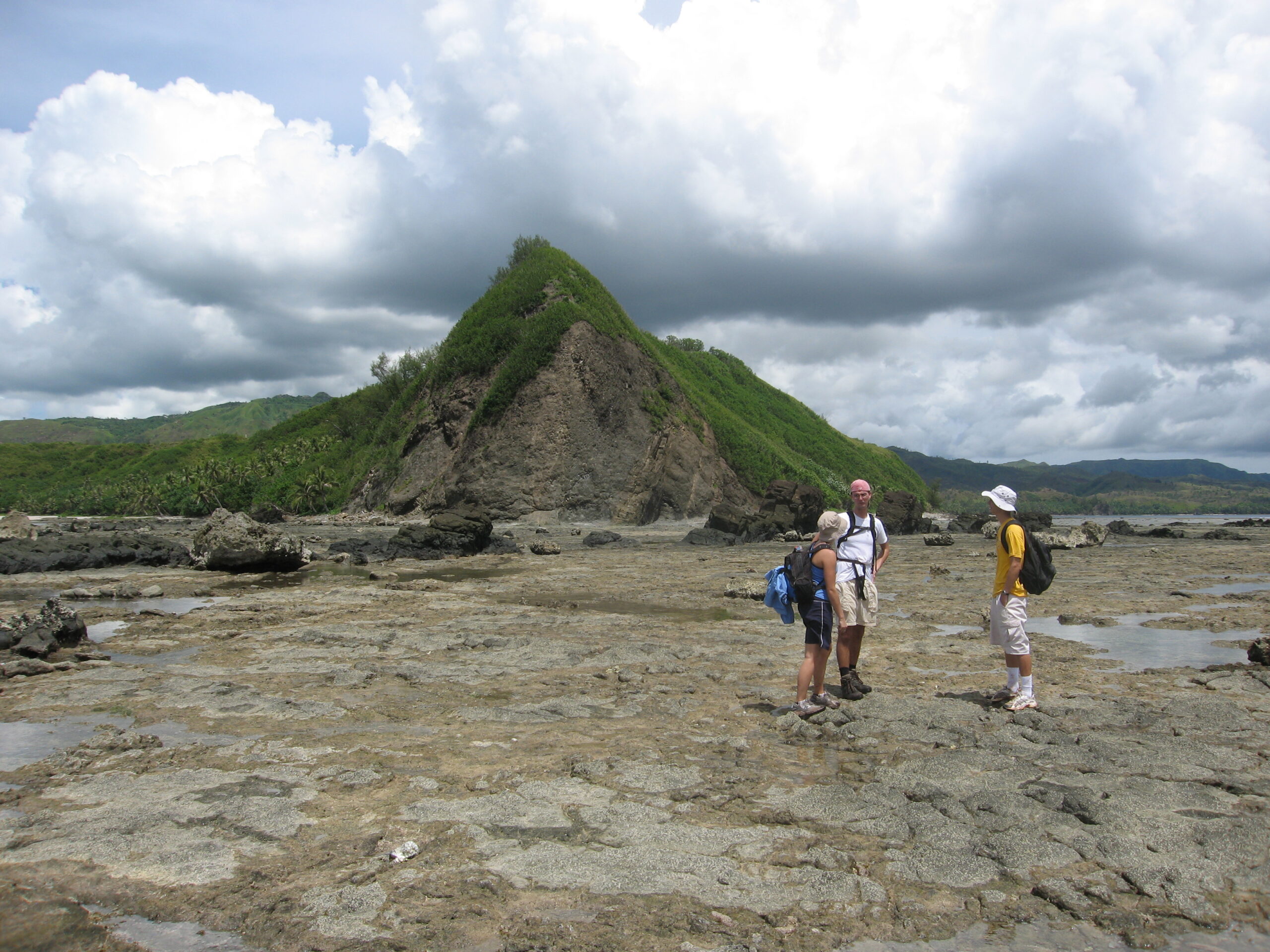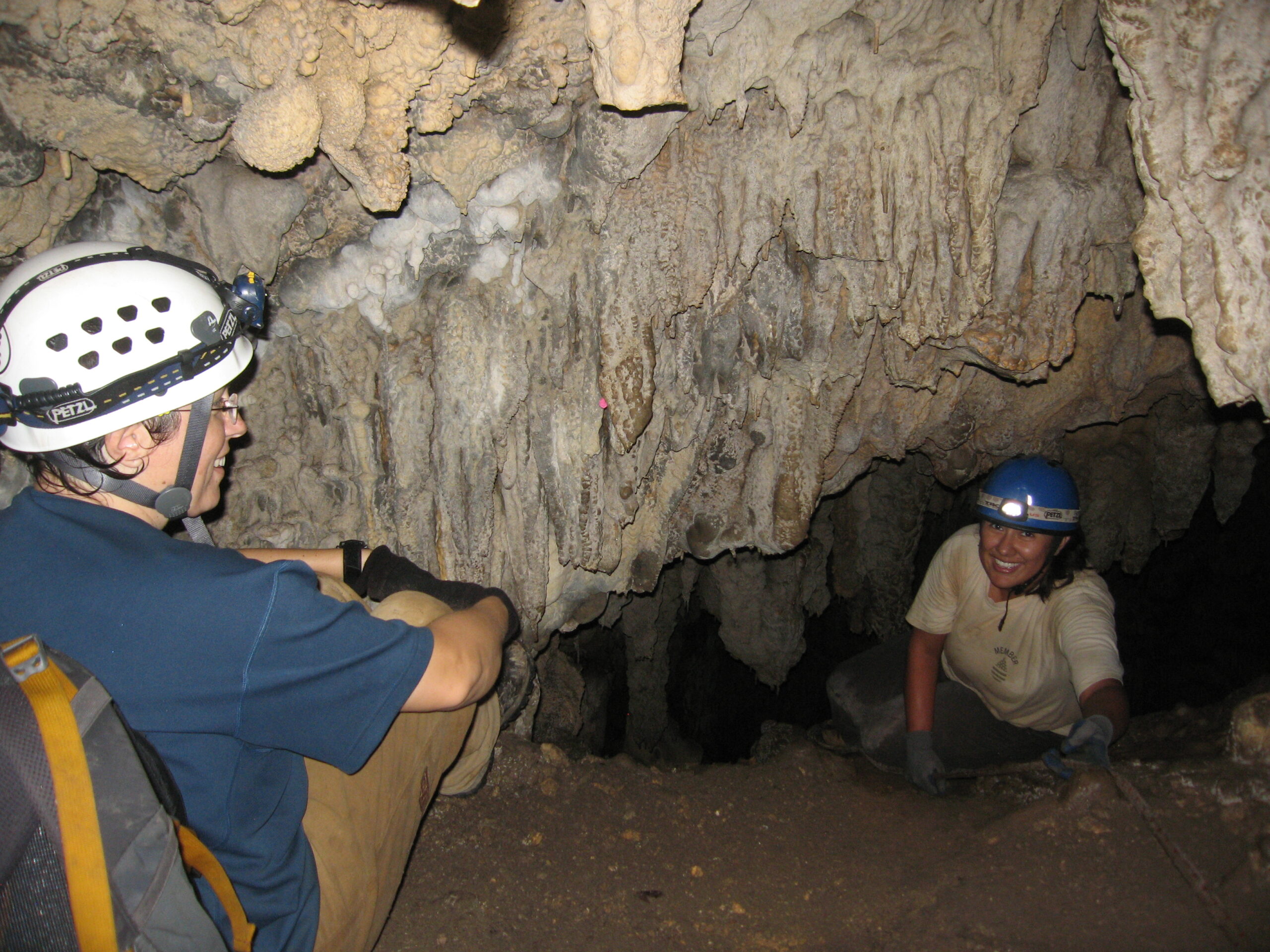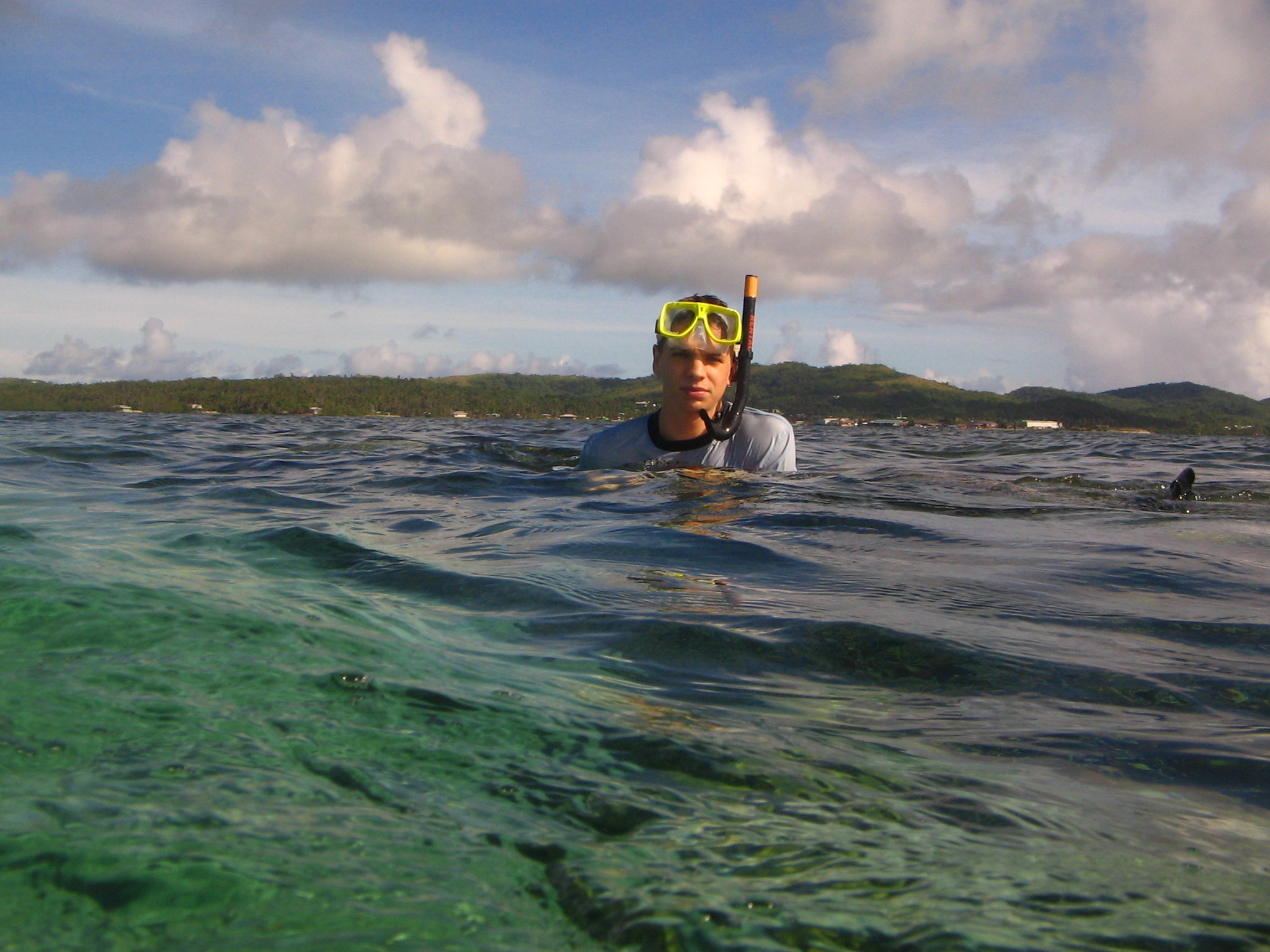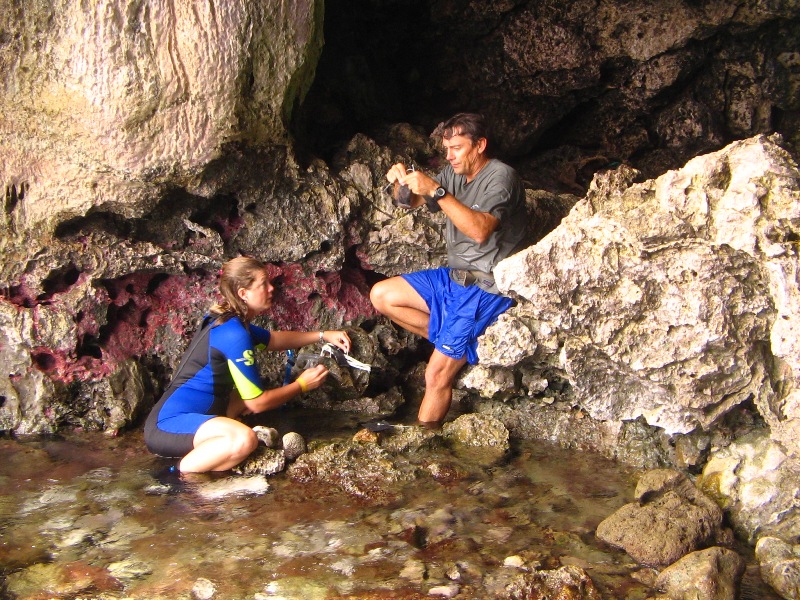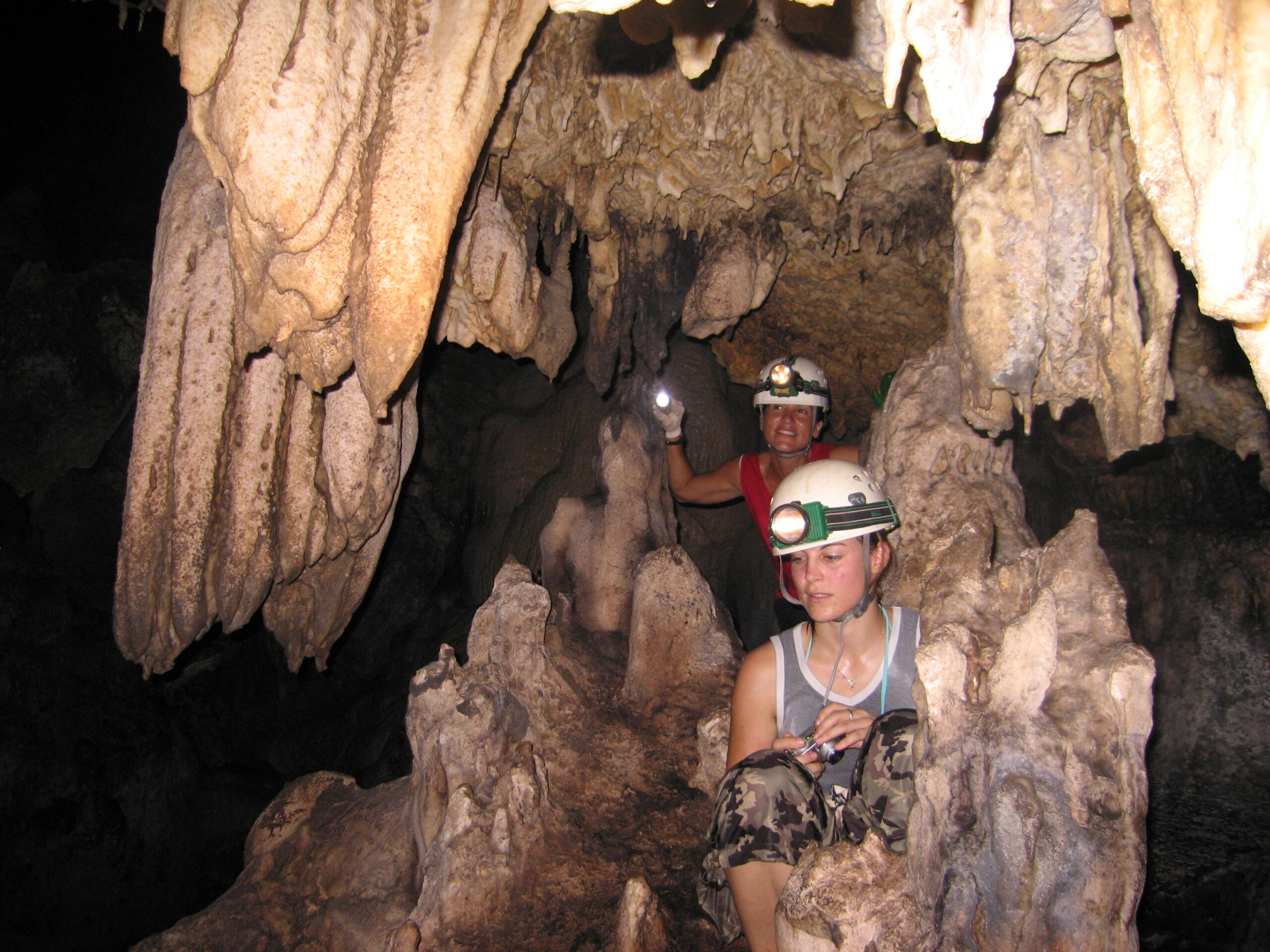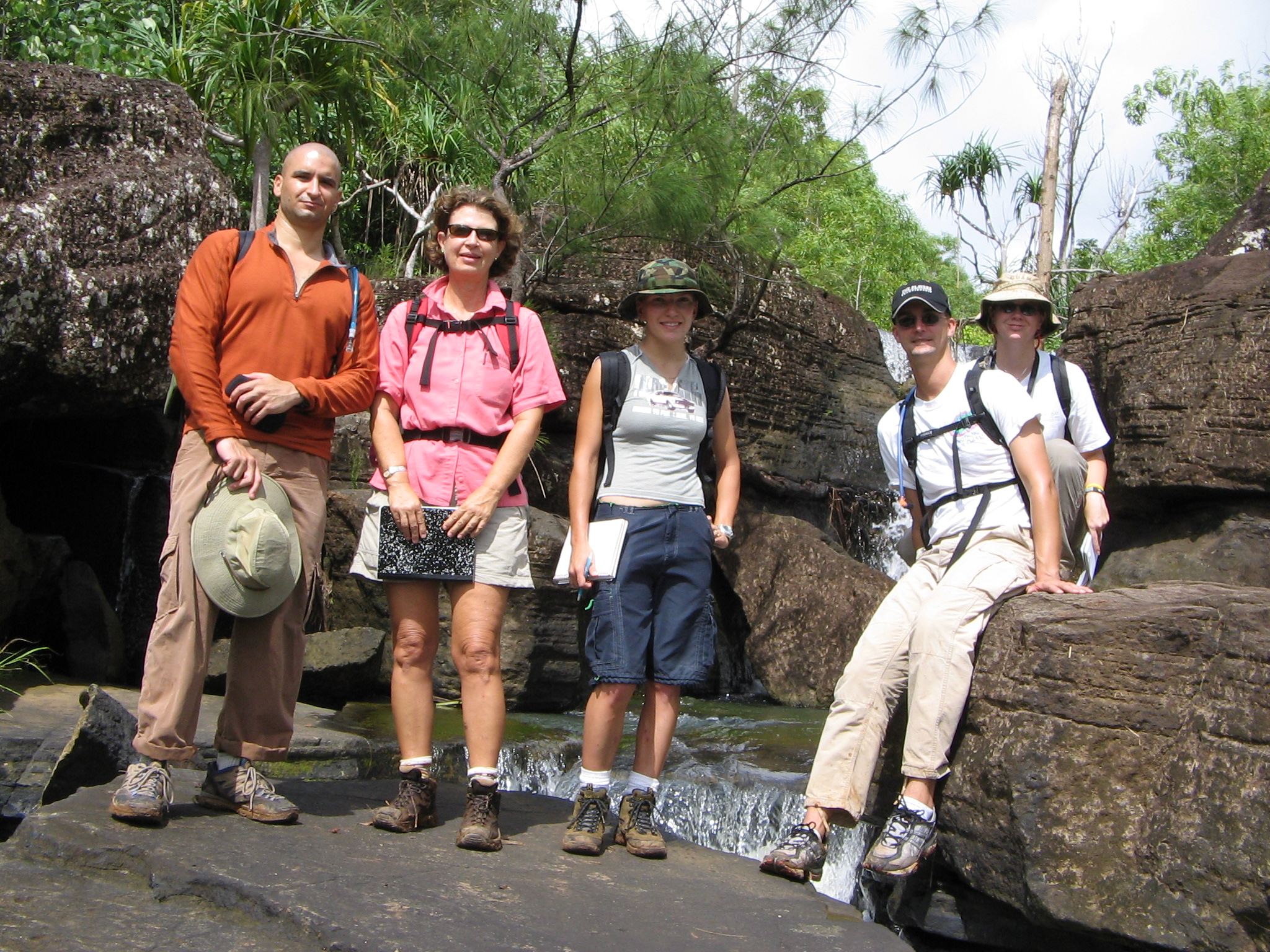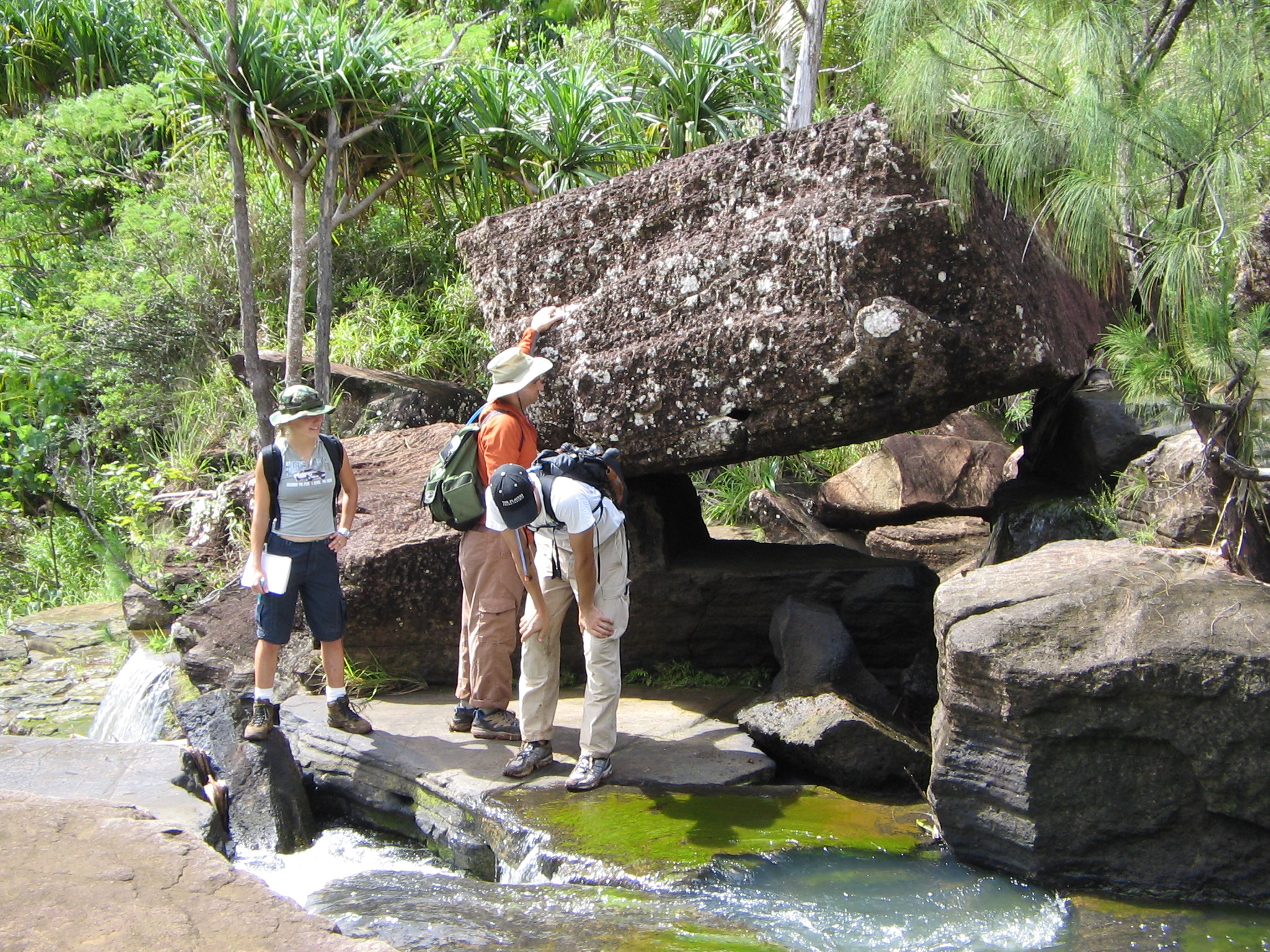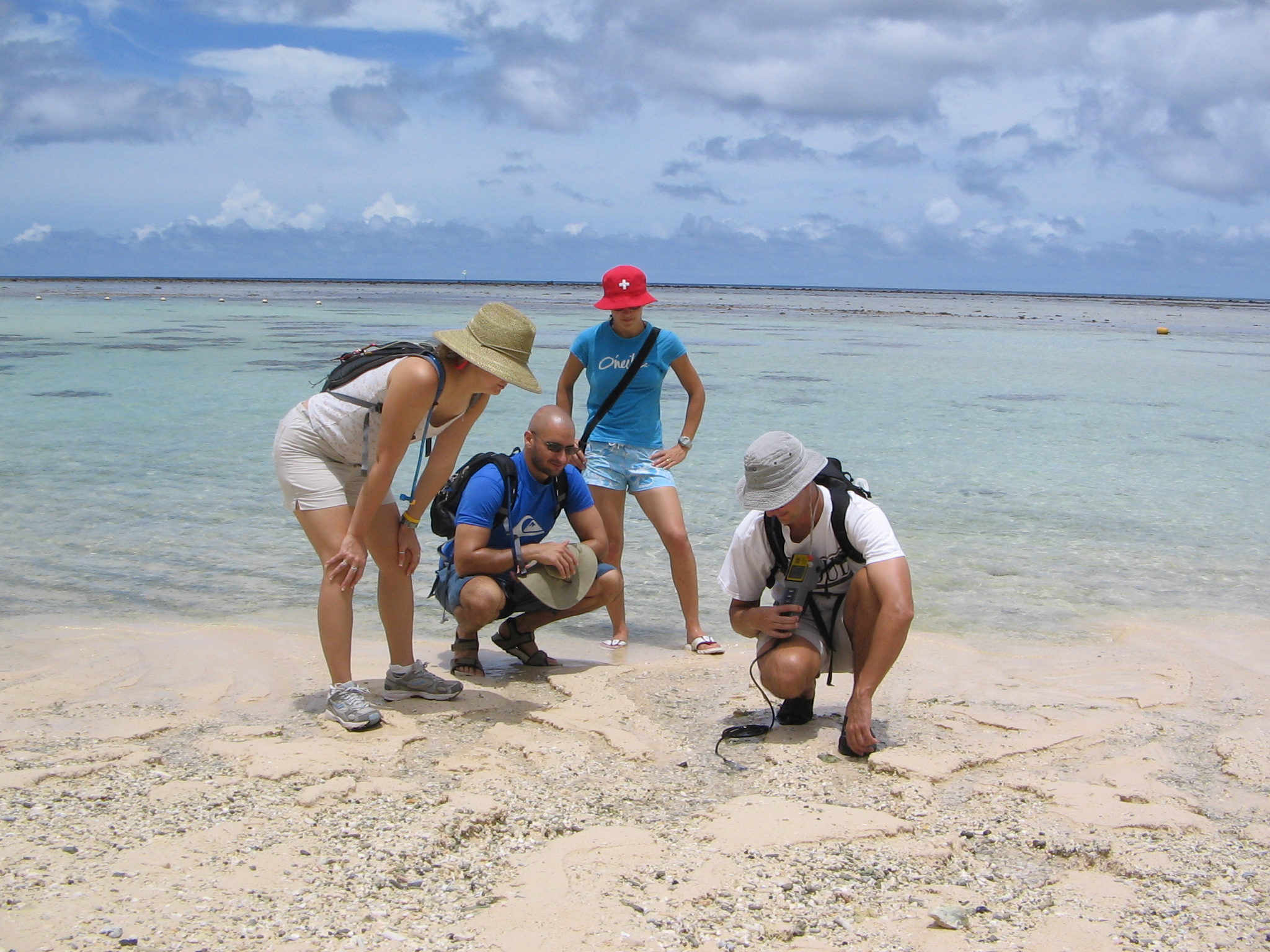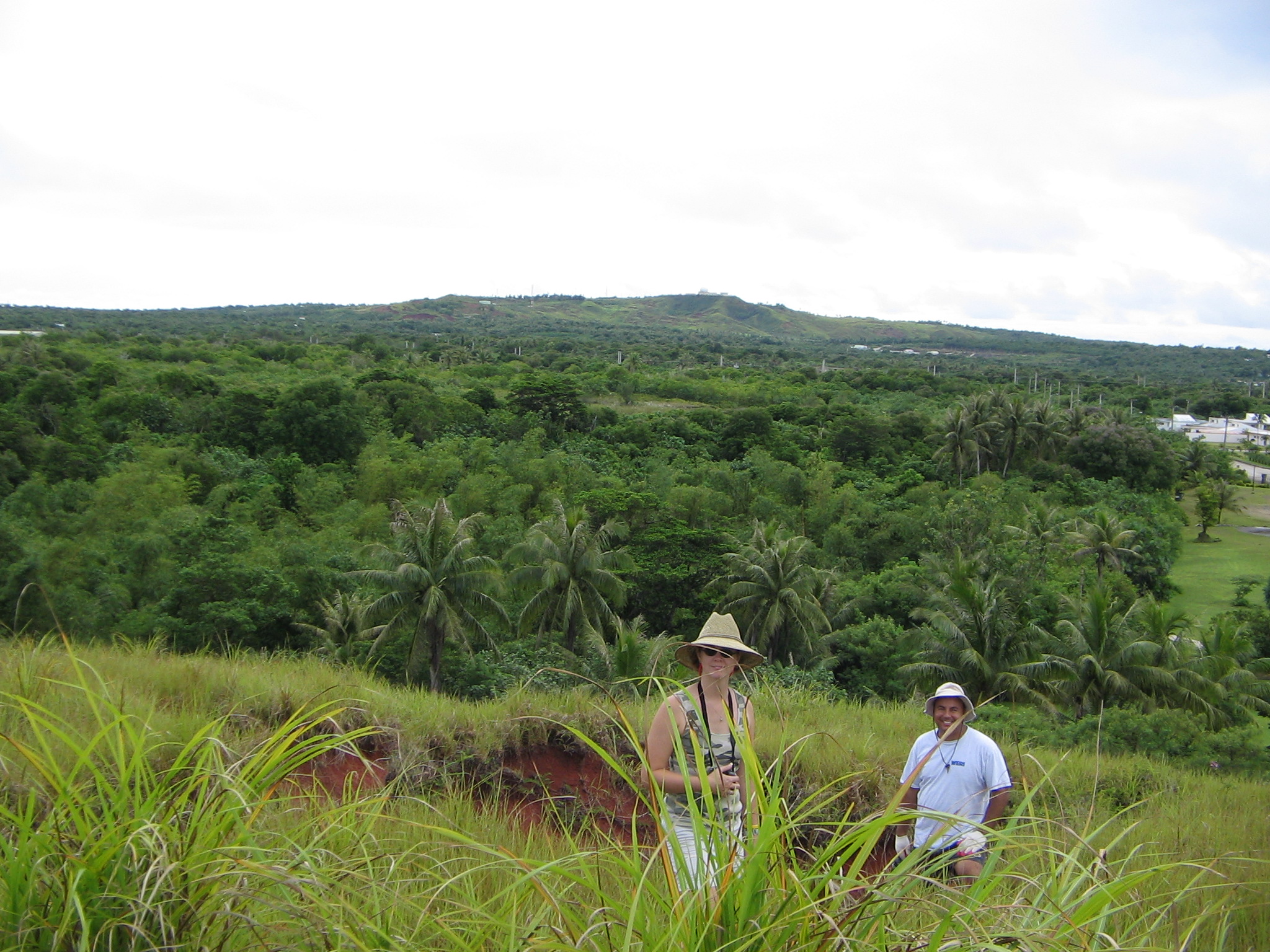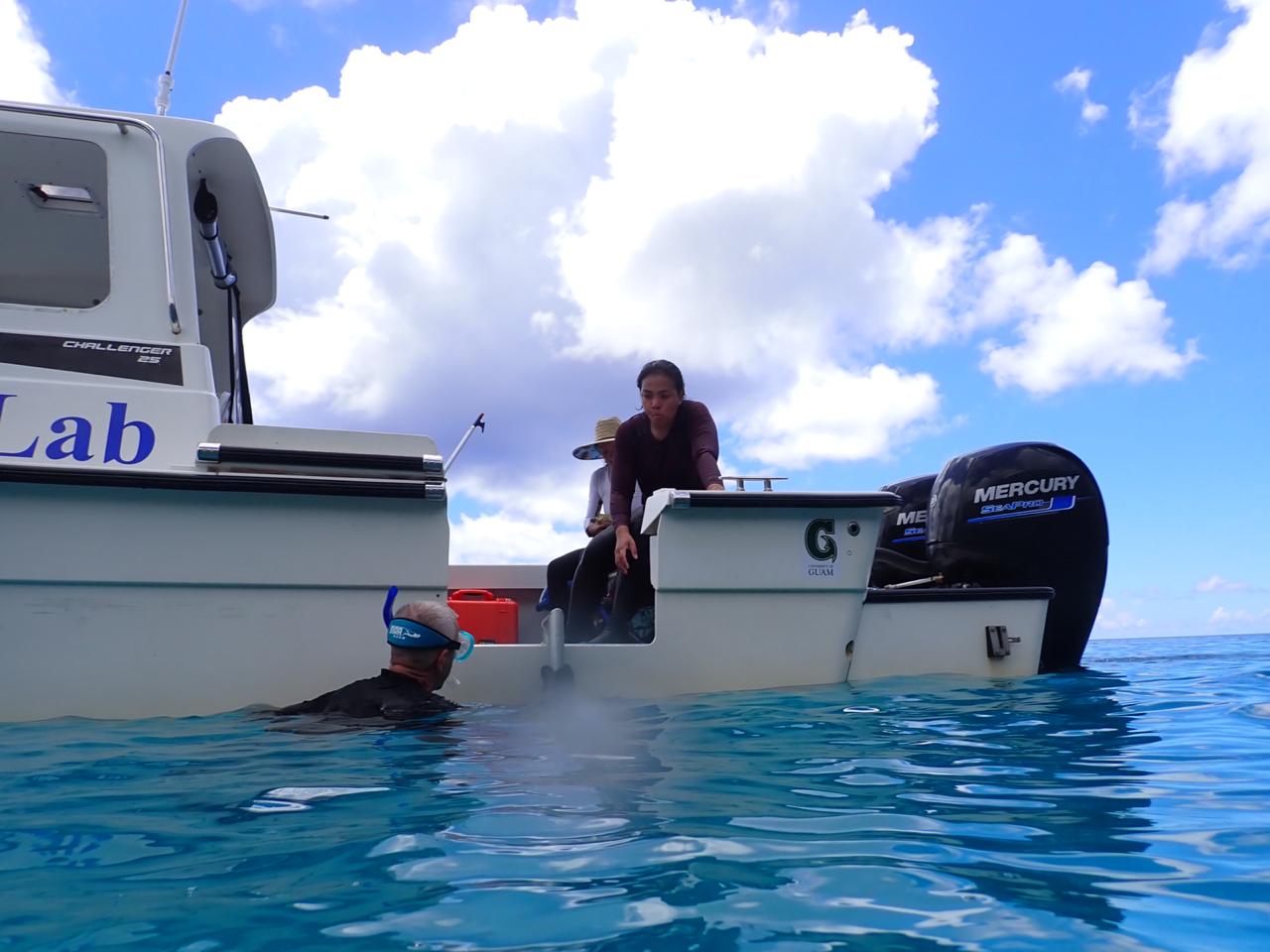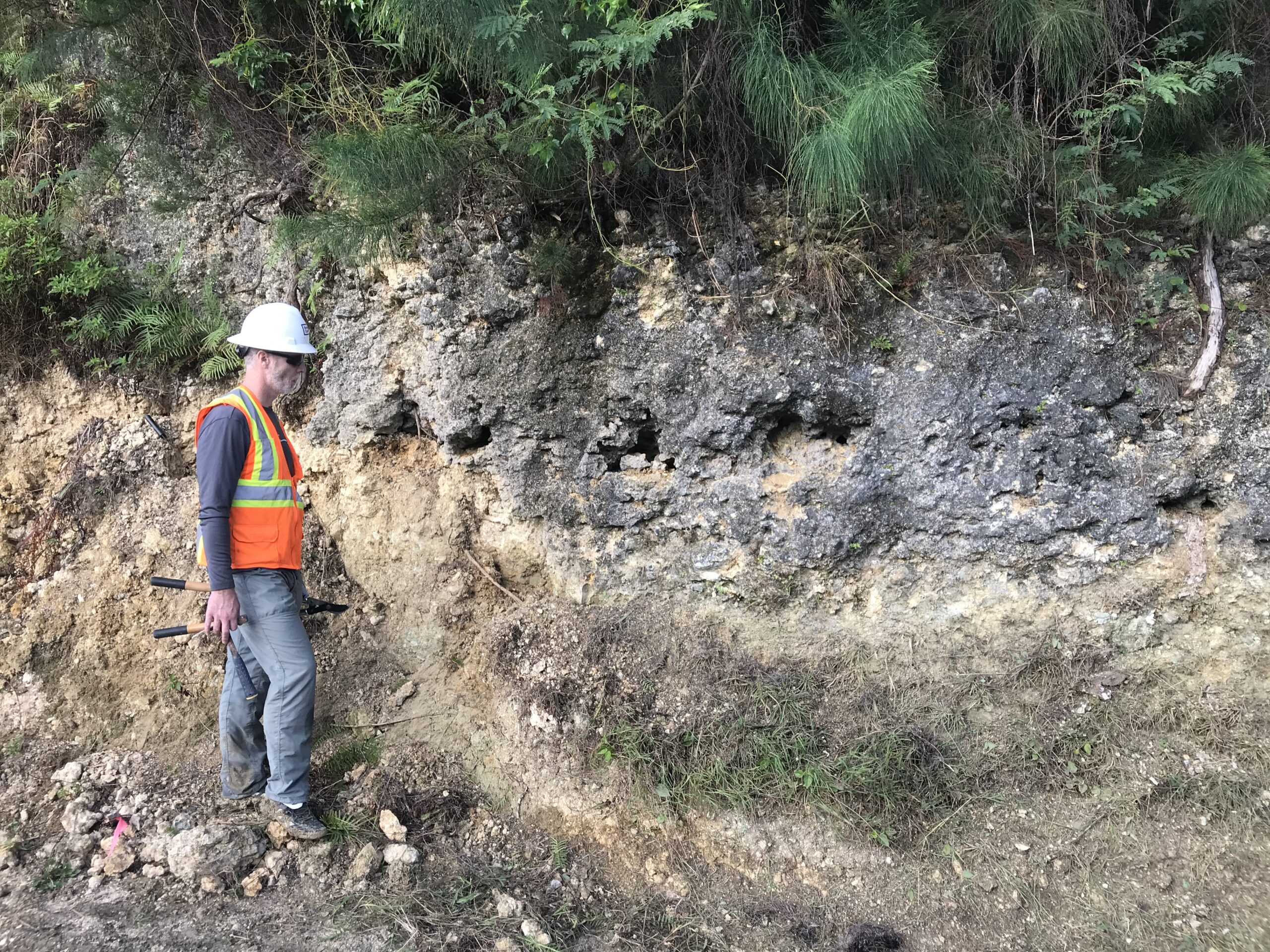Mission and Vision Statements
The Water and Environmental Research Institute of the Western Pacific
This page examines WERI’s mission and vision for the next five years in light of anticipated opportunities and challenges, and proposes steps to develop WERI’s strategic strengths and ameliorate present deficiencies so as to position the institute for maximum mission success.
Mission Statement
Trustworthy and timely research, instruction, and advice to support scientifically informed development and effective management of the freshwater resources of Guam, CNMI, and FSM.
Explanation
WERI’s mission flows from its federal and local mandates (Appx 1) to conduct applied research and provide education, training, and scientific advice on the development and management of the fresh-water resources of Guam, the Commonwealth of the Northern Mariana Islands (CNMI), and the Federated States of Micronesia (FSM). Research, teaching, and outreach focus on exploration, production, distribution, and management of local freshwater resources, but also extend to related basic scientific topics of regional, national, and international scope. WERI trains new environmental scientists and fosters integrity in research and application of environmental science. WERI thus provides high quality graduate instruction and student research support. Under its Guam Hydrologic Survey (GHS) mandate, WERI maintains a hydrologic database for Guam and provides regular reports to policy-makers and managers of Guam’s water resources. WERI maintains essential laboratories, including a Water Quality Analysis Laboratory to support hydrologic and environmental research and meet public and commercial needs for water quality analyses on Guam and in the western Pacific region.
Vision Statement
WERI’s vision is to remain the acknowledged local and regional source of choice for scientific and technical advice on water resource exploration, development, and management; and a nationally-ranked and internationally recognized center of excellence for research in its strategic specialties. To fulfill this vision, WERI will maintain broad expertise in the essential subdisciplines of scientific and engineering hydrology and leverage its expertise with strategic partnerships and collaborations.
Breadth of Expertise
WERI seeks to maintain a portfolio of core expertise that spans the natural water cycle from meteorology through surface and groundwater hydrology, and essential water-use activities including exploration, development, and management; water quality protection and remediation; wastewater treatment and disposal; and related basic supporting fields, such as geospatial analysis, climatology, environmental chemistry, and microbiology.
Partnerships and Collaborations
WERI leverages its expertise on local geology and hydrology with national resources through active partnership with the USGS Pacific Islands Water Science Center in Honolulu, Hawaii, with which it jointly administers the USGS Groundwater and Streamflow Information Program for Guam through the locally-funded Guam Comprehensive Water Monitoring Program, the Guam Hydrologic Survey Program, and—starting in the next five years—the One-Guam Aquifer Monitoring Program in partnership with the Department of Defense’s Joint Region Marianas. Local collaborative partners include the Guam Waterworks Authority and Guam Environmental Protection Agency. WERI also has active external collaborations with researchers at other universities.
Core Values
WERI’s core values are derived from the commitments of its faculty and staff to science as
the pursuit of truths about the natural world that can be tested and validated, and to the principles of
ethical practice, efficient management, wise stewardship, and selfless public service. Research,
education, and outreach are undertaken with professional integrity and for the good of humanity:
Reliable and honest science
Consultative decision-making and across-the-board teamwork
Superb instruction and conscientious mentoring
Earnest service to the community and university
Sincere partnerships with public and professional agencies
Background
Charters and Funding Sources
The Water and Environmental Research Institute of the Western Pacific (WERI) is one of the 54 National Institutes for Water Resources Research (NIWRR) established under the Water Resources Research Act of 1964. NIWRR institutes are located at the Land Grant Universities of the states and territories and are explicitly charged to:
Arrange for competent research that addresses water problems or expands understanding of water and water-related phenomena,
Aid the entry of new research scientists into the water resources fields,
Help train future water scientists and engineers, and
Get results of sponsored research to water managers and the public.
WERI is a regional institute serving not only the US Territory of Guam (since 1975), but also the Federated States of Micronesia (FSM) (since 1991), and the Commonwealth of the Northern Mariana Islands (CNMI) (since 1997). Its research, education, and outreach agendas are established in consultation with three advisory councils–one each for Guam, FSM, and CNMI.
Total federal and local funding for WERI in the past fiscal year (FY2018) was $2M. Core federal funding for WERI and other NIWRR institutes comes from the US Geological Survey’s Section 104B program, which has lately provided about $93k annually for research, education, and outreach for each constituency. (WERI thus receives $93k annually in 104B funds for each of Guam, FSM, and CNMI.)
WERI also receives local annual funding from the Guam Legislature for the Guam Comprehensive Water Monitoring Program (Guam Public Law 24-161), and the Guam Hydrologic Survey Program (Guam Public Law 24-247), which have lately received about $140k and $180k annually, respectively. These programs, created in 1998 in response to the intense storms and severe regional drought associated with the 1997-1998 El Niño, support WERI’s partnership with the USGS’s Pacific Island Water Science Center to administer the USGS Groundwater and Streamflow Information Program for Guam and promote water resources research, education, and outreach on Guam. Applied research on specific problems for Guam is also funded by other local agencies, including Guam Waterworks Authority and Guam Environmental Protection Agency.
From other federal sources, WERI also conducts basic research on topics of regional and global interest–ranging from regional paleoclimate history to ongoing El Nino/Southern Oscillation effects, karst aquifer evolution, and hormesis effects of household radon. External funding sources have lately included the National Oceanic and Atmospheric Administration, National Science Foundation, National Aeronautics and Space Administration, and US Environmental Protection Agency.
WERI Organization and Faculty Expertise
WERI’s faculty consists of seven full-time Ph.D. research scientists and engineers. WERI directors are appointed for three years at a time (and for no more than two consecutive terms) from among its faculty. Directors thus stay current in their respective disciplines and remain engaged in ongoing research and graduate instruction during and after service as director.
WERI maintains faculty expertise in each component of the natural water cycle and the water resource management stream pertaining to the islands of Guam, CNMI, and FSM–from precipitation to stream and groundwater flow, to coastal discharge; and from drinking water production and quality management to wastewater treatment and disposal. Faculty specialties thus include meteorology, hydrogeology, surface and groundwater hydrology, drinking water distribution, wastewater engineering, water quality and toxicology, and GIS analysis.
WERI Academic Support and University Service
Each faculty member is responsible not only for conducting a research program, but for contributing to graduate instruction, leading student thesis research, and contributing to university and community service. WERI faculty founded the university’s graduate Environmental Science Program in 1994, and continue to lead in teaching its courses and fostering graduate thesis research. WERI also conducts a vigorous program of locally-focused professional education and outreach, which includes workshops and field courses for professionals, educators, and students at all levels.
WERI Facilities
WERI is housed in a dedicated 7000-sq. ft. building on the university campus, with office space for faculty and staff, and with laboratory space containing student workspaces. It has two additional, separate laboratory facilities on campus, also containing faculty and student office space. Laboratories, including utilities and network services, are 100%-supported by university funds:


WERI Water Quality Analysis Laboratory
Staffed by a full-time laboratory manager, an analytical chemist, and a laboratory technician, and augmented by two student research assistants, the laboratory supports WERI research and is USEPA-certified to provide limited analytical services to public and private customers.
WERI Wastewater Treatment Research Laboratory
With a focus on biological water and wastewater treatment, this lab is supervised by a WERI wastewater engineer working in collaboration with the Guam Waterworks Authority and the Guam EPA.
WERI Meteorology, Groundwater Hydrology, and Geospatial Analysis Laboratories
These facilities service active rain gauges, rainwater collectors, stream and water-well instruments, drilling equipment, and geospatial analysis workstations.
WERI Goals for 2020-2025
Listed below are eight specific priorities for WERI to continue to meet is mission and realize its vision. Each is followed by the key steps that need to be taken during the next 18 months to ensure progress toward them:
- Restoring Comprehensive Water Monitoring Program (CWMP) funding to cover operating expenses and long-term maintenance and updates of instrumentation in the 7 deep observation wells on civilian property (beginning with $190,000 annually for FY2020). [Director (inter-agency coordination) & GHS Program Manager (internal preparation and products)]
- Re-institute pro-active initiation of the annual budget for CWMP, with detailed justifications of each line item, and verbal presentation of the written budget submission to the Legislature.
- Submit request for $200,000 for FY2020.
- Restoring Guam Hydrologic Survey (GHS) funding to at least its historical norm of $250,000 annually in 1998 dollars, and maintenance of adequate staff and student research assistant support for the GHS mission. [Director (inter-agency coordination) & GHS Program Manager (internal preparation and products)]
- Re-institute pro-active initiation of the annual budget for GHS, with detailed justifications of each line item, and verbal presentation of the written budget submission to the Legislature, along with the annual written report on the previous year’s activities.
- Submit request for $300,000 for FY2020.
- Successful completion of the DOD-funded Monitoring System Expansion and Restoration Program (MSERP) to rehabilitate the 7 existing (civilian) deep observation wells and install 7 new deep observation wells on military property that is slated for groundwater development. [Director (inter-agency coordination) & GHS Program Manager (internal preparation and products) and MSERP Assistant (technical coordination)]
- Continue close engagement with GWA, NavFacMar, and their sub-contractors to keep the program on track.
- Coordinate with USGS to prepare for geophysical logging as wells are drilled.
- Coordinate with GWA and GEPA to ensure that WERI is advised when drilling permits are issued.
- Implementation of the One-Guam Aquifer Monitoring Program (OGAMP) by securing permanent (annual) funding from DOD and GWA to supplement the CWMP to support maintenance, instrumentation, servicing, and data collection on all 14 (existing and new) deep observation wells. [Director (inter-agency coordination) & GHS Program Manager (internal preparation and products) and MSERP Assistant (technical coordination)]
- Continue close engagement with GWA, NavFacMar, and their sub-contractors to keep the program on track.
- Highlight the value and status of OGAMP at the Guam Advisory Council Meetings. Invite NavFacMar and GWA to present a status report on the One-Guam effort.
- Successful faculty recruitment and maintenance of broad faculty expertise. WERI’s success owes in large part to its broad but coherent portfolio of faculty expertise, which includes meteorology and hydrogeology, surface and groundwater hydrology, and waste water and water quality. With the acquisition of an early-to-mid-career surface-water hydrologist, the faculty will be fully staffed. [Director]
- Keep faculty positions filled with top-quality people with collective skills embracing the entire natural water cycle and chain of human water use.
- Pro-actively manage progress of newest faculty members toward tenure and promotion.
- Continued leadership in the UOG graduate Environmental Science Program. WERI’s success also owes to its having founded (in 1994) and deliberately cultivated a vigorous graduate program in environmental science with a well-rounded and rigorous curriculum in the hydrological disciplines of earth science and engineering. WERI faculty will continue to contribute leadership to the program to ensure high quality in the curriculum, student recruitment, and graduate research. WERI will continue to make student funding and student success top priorities. [Director and faculty]
- Continue to provide program coordinator and chairs of program committees.
- Prepare for succession of program coordinator by WERI faculty.
- Optimization of capacity and revenue-generating capability of the Water Quality Analysis Laboratory. The laboratory has great potential for growth, both in terms of services and volume. Such growth requires 1) upgrade of the lab manager’s position from a technical to administrative position, 2) acquisition of additional technical staff, 3) upgrade of WERI administrative staff positions to reflect lab support duties, 4) dedicated accounting for management on a business model, and 5) more laboratory space and equipment. A market survey is required to determine optimum services, price structure, and staffing. [Lab Planning Committee: Kim, Cruz, Rouse]
- Lab Development Planning Committee to be formally constituted. Chair: Dr. Kim. Members to include Dr. Rouse, Ms. Cruz.
- Retain business specialist to work with committee to prepare a detailed market survey and business model.
- In meantime, LDPC to develop concept plan for additional lab certifications and associated equipment and staffing needs.
- New WERI facility with 1) office spaces to accommodate the entire faculty, administrative staff, and graduate research assistants; 2) instructional facilities, including classroom space, instructional equipment, teaching libraries, collections, and displays; 3) laboratories (chemistry, hydrology, wastewater, GIS/Computing); and 4) storage space for equipment, documents, and materials. WERI has outgrown its present facility: It now has 6 faculty positions and one director position. The WERI building, however, only contains offices for 4 faculty and the director. Two faculty offices are therefore currently in House 5 of Dean’s Circle. A makeshift office has been constructed in the WERI hydrology lab by partitioning part of it. The current facility also lacks dedicated space for graduate student offices. There is no space for teaching collections of rocks or storage space for historical documents, photographs, and maps. Laboratories are overcrowded. Storage has been relegated to containers. There is no facility for storage and disposal of hazardous waste. [Facility Planning Committee: Habana, Kim, Cruz, Wen, Bautista]
- WERI Facility Planning Committee to be formally constituted. Chair: Dr. Habana. Members to include Dr. Kim, Ms. Cruz, Dr. Wen, and Ms. Bautista.
- WFPC to develop concept plan for eventual presentation to architects and university planners.
- WFPC to work with Director and university planners to identify potential funding sources.
Appendix 1: WERI Statutory Mandates
The National Water Resources Research Act of 1964, Water Institute Program 104B requires that WERI:
- Arrange for competent research that addresses water problems or expands understanding of water and water-related phenomena,
- Aid the entry of new research scientists into the water resources fields,
- Help train future water scientists and engineers, and
Get results of sponsored research to water managers and the public.
As Guam Partner in the Pacific ENSO (El Nino/Southern Oscillation) Application Center, WERI provides:
- Information on the effects of ENSO to regional water resources and disaster managers
- Outreach and educational activities
- Long-range forecasts of rainfall, typhoons, and sea levels
- Monthly coordination with NCEP (National Center for Environmental Prediction) on climate hazards
Public Law 24-161, 1998, Drought Management and Comprehensive Water Conservation Plan, requires that WERI:
- Conduct and administer a Comprehensive Monitoring Program to collect data and prepare reports on salt water intrusion, water lens thickness in the northern part of Guam, stream flow data in the southern part of Guam, and related matters
- Said program shall be administered in conjunction with the United States Geological Survey
Public Law 24-247, 1998, The Guam Hydrological Survey mandate, requires that WERI:
- Locate, inventory and evaluate all hydrologic data pertaining to Guam and consolidate the data into a single computer-based data library from which information can be easily accessed and retrieved
- Establish a direct working relationship with each organization collecting hydrologic data important to Guam, and maintain a permanent flow of new data from each organization to keep the data library up to date
- Conduct analyses to assess the status of Guam’s water resources, and publish annual and other regular concise reports on water use, trends and key concerns for use by the governor, legislature, public agencies and private businesses, and citizens of Guam.
Appendix 2: Water Resources Issues and Problems of the Western Pacific
Region-Wide Water Resources Issues and Problems
Freshwater supply and quality in the western Pacific are profoundly affected by El Niño and La Niña cycles. Although most islands receive 100 or more inches annual rainfall, the erratic timing and intensity of rainfall pose unique challenges. Any island in the region can experience severe drought in the year that follows a strong El Niño. Sudden, intense storms disable municipal water systems and household rain catchments for weeks. During extended droughts, surface reservoirs dry up and groundwater reserves on remote islands turn saline. Understanding regional distributions of rainfall and cycles of storm and drought is thus basic to water resources research and education in the west Pacific.
Guam Water Resources Issues and Problems
The economic boom on Guam that began in the mid-1980s and lasted until the 1997 Asian Economic Crisis transformed a small, stagnant, third-world economy into a mature $3.5-billion economy built around a tourist industry serving over 1.5 million visitors per year and raised the resident population from 104,000 in 1980 to 165,000 in 2010. Prosperity has brought new challenges, however, and the island is currently poised for another economic expansion, associated with the relocation of thousands of US Marines and their families from Okinawa, Japan. It is estimated that the population may rise to 225,000 by 2025, bringing additional pressures on water production and distribution, and on wastewater disposal.
Ninety percent of Guam’s 40 MGD of municipal water is produced from about 120 wells in its Northern Guam Lens Aquifer (NGLA)–the limestone bedrock aquifer beneath the uplifted plateau that covers the northern half of the island’s 214 sq. mile surface and contains all its urban centers, including the tourist districts. Current production is estimated to be 14 to 17% of recharge but is constrained by increasing risks of drawing saltwater into the freshwater lens if new wells are set too close or too deep, pumped too hard, or placed in new locations that are vulnerable to saltwater contamination. Understanding the hydrogeological factors that determine where wells can best be placed; how they should be designed, built, and managed; and how water can be economically distributed from sources to customers is essential for effective water resources development. Stormwater and wastewater management also present increasing challenges for aquifer and coastal zone protection as urbanization continues and population grows.
On the volcanic upland of southern Guam, the US Navy’s Facilities Engineering Command (NAVFAC) can produce up to 9 MGD of treated water from a surface reservoir. NAVFAC sells up to 3 MGD to the Guam Waterworks Authority to service the adjacent villages, except when the surplus is eliminated by drought. The reservoir is vulnerable to sedimentation from landslides in the watershed triggered by typhoons. Sediments and sewage releases carried by surface streams can threaten the health of reefs along the southern coast. Understanding how land use and other factors affect the quality and quantity of surface water resources in the south is thus also an essential component of water resources research, information transfer, and education programs on Guam.
Commonwealth of the Northern Mariana Islands (CNMI) Water Resources Issues and Problems
The corresponding economic boom in the CNMI from the mid-1980’s through 1997 brought similar increases in the CNMI’s tourism industry. The current population of 55,000 is more than triple the 17,000 of the early 1980s, and each year about 0.5 million tourists visit Saipan. Saipan, with an area of 48 sq. miles, is the home of 95% of the CNMI’s population.
Saipan is also formed of volcanic rocks overlain by limestones, but the aquifers are much less productive than Guam’s. About 90% of Saipan’s freshwater production of 10 MGD comes from about 140 production wells. As on Guam, most of Saipan’s original groundwater development was in support of WWII military activities. Saipan water resources underwent especially rapid, intensive, and poorly-planned early development during and immediately after WWII. The island thus inherited an infrastructure that included wells set too close, too deep, and pumped too hard. Groundwater production is plagued by high-chloride wells, and the obsolete, aged distribution system has been inadequate to support the growth of the past 40 years.
Residents not only suffer widespread brackish water, but frequent and lengthy low water pressure or even complete outages. Another legacy of the intense combat on Saipan during WWII is that island watersheds contain unexploded munitions and un-remediated military waste dumps from which heavy metals and other contaminants leach into streams and groundwater.
Federated States of Micronesia (FSM) Water Resources Issues and Problems
The FSM consists of four island states in the Caroline Islands: Yap, Chuuk, Pohnpei, and Kosrae-spread across 1,700 miles of ocean from east to west. Most of the combined population of 104,000 resides on a few volcanic “high,” islands, which are the population centers and seats of government. All but Kosrae also include adjacent, remote atolls, comprising the much smaller “low” or “outer” islands, which stand only a few feet above sea level, and most with widths measured in only hundreds of yards. A few have occasional air service from the main island via local missionary air services. Most, however, are accessible only by boat, and transits can take several days.
In contrast to Guam and the CNMI, the FSM is mostly rural, with only a few small centers of commerce on the main islands serving commercial fishing and recreational diving industries. The economies of both the high and low islands otherwise consist of subsistence fishing, gardening, and keeping of pigs and chickens.
The largest villages on the high islands are serviced by small municipal water systems, which draw from both surface and groundwater. Outside of these centers, residents rely on household rain catchments. Water quality problems associated with inadequate infrastructure and inadequately trained water and wastewater system operators are commonplace.
On the low islands, freshwater is obtained almost exclusively from household rain catchments, and used mainly for cooking and hygiene. Some is used for drinking, although coconut juice is generally preferred for drinking when available. Immediately following an El Niño, the atolls can experience water emergencies when storms destroy household catchments, droughts exhaust household storage, and coconut crops are devastated by both storms and drought. During severe droughts, residents on both high and low islands have been forced to use contaminated water, which has caused outbreaks of water-borne diseases, including cholera in Chuuk during the 1983 El Niño drought.
Water resources research, information transfer, and education for the FSM, therefore, must address a wide array of topics, including water provisioning from rooftop catchments, hand-dug and drilled water wells; stream water diversion and treatment; and municipal and household water storage and disinfection. Water quality and safety problems include protection of water sources from piggeries and sewage, household waste disposal, and municipal wastewater treatment and disposal. The proximity of residential centers to reefs, bays, and lagoons–from which fish and other seafood are harvested for local consumption–puts a premium on the protection of coastal water quality.
Appendix 3: 2011-2015 Research History-Section 104 Projects
USGS 104 projects are planned and implemented as part of a broader research, information transfer, and education agenda supported by additional sources, including the Guam Legislature, National Science Foundation, National Oceanic and Atmospheric Administration, and the Department of Defense. WERI’s 104 funds thus leverage broader basic research into problems of regional to global interest. (See “Follow-on funding and leveraging” in “Additional Materials.”) Most projects provide two-year graduate research assistantships. Highlighted below, by category (research, information transfer/outreach, and education), are the main areas of emphasis for 2011-2015, and the general objectives of the projects:
Region-Wide Areas of Emphasis and Objectives
Regional Climate History (Research)
Regional climate research launched with 104B funding, which continued into 2011 (2011GU196B) included reconstructing pre-historic sea surface temperatures and climate histories of Guam using coral and speleothem records. This work was leveraged by a three-year NSF-funded project with the University of Texas-Austin, “Holocene Hydrologic Variability across the West Pacific Warm Pool” (2011-2013, $164,335). Published results are still coming forward and provide historical context for evaluating modern rainfall variability and drought thresholds for high islands and atoll islands in the FSM (2014GU278B).
Island Water Resources Sustainability Conferences (Information Transfer)
Along with the three other island-based institutes (Hawaii, Puerto Rico, Virgin Islands) WERI co-sponsored the First and Second Conferences on Water Resources Sustainability Issues Tropical Islands, held in Honolulu, 14-16 November 2011 and 1-3 December 2015 (2015GU293B), respectively.
El Nino Effects (Education)
WERI assembles an outreach team during each El Niño year to discuss anticipated climatic events and related environmental effects, such as sea level fluctuations, with government agencies and the local communities. 2015 was a very busy year for the WERI outreach team. Outreach events included briefings to DoD officials Hawaii, and government officials and water resource managers in Majuro, Pohnpei, and the CNMI. WERI’s meteorologist participated in regional drought forecasts that obtained a perfect skill-score at a three-month lag.
Guam Areas of Emphasis and Objectives
Aquifer Salinity and Sustainable Yield (Research)
Research from 2011-2015 focused on constructing a hydrogeologic map and aquifer database (2013GU242B), documentation of historical trends in aquifer salinity (2011GU194B, 2012GU218B), and numerical modeling to explore aquifer sustainable limits (2014GU272B, 2015GU284B). This work uses limiting scenarios suggested by regional paleoclimate research described above and was hugely leveraged by the 2010-2013 collaborative USGS-WERI Guam Groundwater Availability Study, which included the Hydrogeological Database for Northern Guam (2010-2013, $79,979) as part of the USGS-led aquifer modeling project and simultaneous NAVFACPAC Exploratory Drilling Program (2010-2013), which were followed by the DoD-sponsored “Potential Impact of Adaptive Response to Climate Change for DoD Installations on Guam” (2014-2017, $126,590).
Aquifer Field Trip (Education with Information Transfer component)
In 2012 WERI launched a one-day field trip of the Northern Guam Lens Aquifer (2012GU217B) to introduce local policy-makers and heads of government agencies and private-sector water resources firms to the fundamental geologic properties and hydrologic conditions that determine groundwater availability and quality on Guam. It has since become an annual event with multiple offerings to teachers, students, and water resource professionals, as well (2013GU243B, 2014GU270B). It is now leveraged with funding from the Guam Hydrologic Survey and Ford Motor Company’s Global Giving Foundation.
Water Kids Program (Education)
During 2011-2015, WERI expanded its remarkably successful Water Kids education program in Guam and CNMI, which has now trained well over 100 local K-12 school teachers on the hydrologic cycle and principles of conservation and sustainable management for island watersheds and aquifers (2011GU193B, 2011GU198B, 2012GU216B, 2012GU220B, 2013GU244B, 2014GU269B). The success of the program led Ford Motor Company’s Global Giving Foundation to specifically adopt the program and take over funding it, beginning in 2015. It now includes an annual offering of the Aquifer Tour described above, specifically for teachers.
CNMI Areas of Emphasis and Objectives
Nearshore Water Quality (Research)
Nearshore water quality remains an import concern on Saipan, where watersheds contain formerly used defense sites (FUDS) and unexploded WWII munitions, and Saipan’s Puerto Rico dump continues to contaminate Saipan Lagoon. Research in CNMI focused on mercury and other heavy metal contamination of nearshore water incident to FUDS and storm water discharges (2011GU200B, 2012GU22B, 2013GU24B, 2014GU27B, 2015GU285B).
Water Distribution System Modeling (Research with Information Transfer component)
WERI information transfer in CNMI included hands-on training on the use of a water distribution model developed by WERI researchers for Saipan (2011GU199B). The model and training program (2013GU246B, 2014GU276B) greatly assisted the Commonwealth Utilities Corporation (CUC) in providing island residents with an uninterrupted water supply at adequate pressures and flow rates.
Water-Line Leak Detection and Water Kids Programs (Education)
An important and successful education program was water system leak detection training for the CUC (2011GU202B, 2012GU229B). This program provided the basis for similar training in FSM (described below). Educational activities also included the very successful CNMI Water Kids program for school teachers and K-12 students (2011GU202B, 2012GU299B), similar to Guam’s (described above).
FSM Areas of Emphasis and Objectives
Wastewater and Sewage Treatment (Research)
A new and important focus of research in FSM during 2011-2015 was development of sustainable methods for wastewater treatment and composting of sewage sludge for the small municipal plants on the high islands, beginning with Yap (2012GU233B, 2013GU250B, 2014GU277B, 201GU289B). Related, ongoing work has also been extended to include treatment of pig waste with a focus on energy production in Pohnpei as well as Yap.
Atoll Island Water Provisioning (Information Transfer)
In 2008-2010, WERI developed a simple spreadsheet model of atoll island aquifers for estimating effects of droughts and other events on outer-island water supplies. During 20111-2015, WERI trained local users (2011GU208B) and applied the model to planning for sustainable conjunctive use of groundwater and rainwater catchments on remote islands (2012GU228B, 2013251B, 2014GU280B, 2015291B). Follow-on work is ongoing.
Water Line Leak Detection (Information Transfer with Education component)
An important and very successful education program in FSM was water system leak detection training for Pohnpei Utilities Corporation and Yap State Public Services Corporation (2012GU229B, 2013GU252B, 2015GU290B). This program builds on similar successful work in CNMI (described above).
THE FOUR-WAY TEST (FROM ROTARY INTERNATIONAL)
of everything we think, say, or do:
Is it the truth?
Is it fair to all concerned?
Will it build good will and better friendships?
Will it be beneficial to all concerned?
BACKGROUND: CHARTERS AND FUNDING SOURCES
The Water and Environmental Research Institute of the Western Pacific (WERI) is one of the 54 National Institutes for Water Resources Research (NIWRR) established under the Water Resources Research Act of 1964. NIWRR institutes are located at the Land Grant Universities of the states and territories and are explicitly charged to
-
Arrange for competent research that addresses water problems or expands understanding of water and water-related phenomena,
-
Aid the entry of new research scientists into the water resources fields,
-
Help train future water scientists and engineers, and
-
Get results of sponsored research to water managers and the public.
WERI is a regional institute serving not only the US Territory of Guam (since 1975), but also the Federated States of Micronesia (FSM) (since 1991), and the Commonwealth of the Northern Mariana Islands (CNMI) (since 1997). Its research, education, and outreach agendas are established in consultation with three advisory councils–one each for Guam, FSM, and CNMI.
Total federal and local funding for WERI in the past fiscal year (FY2018) was $2M. Core federal funding for WERI and other NIWRR institutes comes from the US Geological Survey’s Section 104B program, which has lately provided about $93k annually for research, education, and outreach for each constituency. (WERI thus receives $93k annually in 104B funds for each of Guam, FSM, and CNMI.)
WERI also receives local annual funding from the Guam Legislature for the Guam Comprehensive Water Monitoring Program (Guam Public Law 24-161), and the Guam Hydrologic Survey Program (Guam Public Law 24-247), which have lately received about $140k and $180k annually, respectively. These programs, created in 1998 in response to the intense storms and severe regional drought associated with the 1997-1998 El Niño, support WERI’s partnership with the USGS’s Pacific Island Water Science Center to administer the USGS Groundwater and Streamflow Information Program for Guam and promote water resources research, education, and outreach on Guam. Applied research on specific problems for Guam is also funded by other local agencies, including Guam Waterworks Authority and Guam Environmental Protection Agency.
From other federal sources, WERI also conducts basic research on topics of regional and global interest–ranging from regional paleoclimate history to ongoing El Nino/Southern Oscillation effects, karst aquifer evolution, and hormesis effects of household radon. External funding sources have lately included the National Oceanic and Atmospheric Administration, National Science Foundation, National Aeronautics and Space Administration, and US Environmental Protection Agency.
WERI ORGANIZATION AND FACULTY EXPERTISE
WERI’s faculty consists of seven full-time Ph.D. research scientists and engineers. WERI directors are appointed for three years at a time (and for no more than two consecutive terms) from among its faculty. Directors thus stay current in their respective disciplines and remain engaged in ongoing research and graduate instruction during and after service as director.
WERI maintains faculty expertise in each component of the natural water cycle and the water resource management stream pertaining to the islands of Guam, CNMI, and FSM–from precipitation to stream and groundwater flow, to coastal discharge; and from drinking water production and quality management to wastewater treatment and disposal. Faculty specialties thus include meteorology, hydrogeology, surface and groundwater hydrology, drinking water distribution, wastewater engineering, water quality and toxicology, and GIS analysis.
WERI ACADEMIC SUPPORT AND UNIVERSITY SERVICE
Each faculty member is responsible not only for conducting a research program, but for contributing to graduate instruction, leading student thesis research, and contributing to university and community service. WERI faculty founded the university’s graduate Environmental Science Program in 1994, and continue to lead in teaching its courses and fostering graduate thesis research. WERI also conducts a vigorous program of locally-focused professional education and outreach, which includes workshops and field courses for professionals, educators, and students at all levels.
WERI FACILITIES
WERI is housed in a dedicated 7000-sq. ft. building on the university campus, with office space for faculty and staff, and with laboratory space containing student workspaces. It has two additional, separate laboratory facilities on campus, also containing faculty and student office space. Laboratories, including utilities and network services, are 100%-supported by university funds:
-
WERI Water Quality Analysis Laboratory. Staffed by a full-time laboratory manager, an analytical chemist, and a laboratory technician, and augmented by two student research assistants, the laboratory supports WERI research and is USEPA-certified to provide limited analytical services to public and private customers.
-
WERI Wastewater Treatment Research Laboratory. With a focus on biological water and wastewater treatment, this lab is supervised by a WERI wastewater engineer working in collaboration with the Guam Waterworks Authority and the Guam EPA.
-
WERI Meteorology, Groundwater Hydrology, and Geospatial Analysis Laboratories. These facilities service active rain gauges, rainwater collectors, stream and water-well instruments, drilling equipment, and geospatial analysis workstations.
WERI GOALS FOR 2020-2025
Listed below are eight specific priorities for WERI to continue to meet is mission and realize its vision. Each is followed by the key steps that need to be taken during the next 18 months to ensure progress toward them:
-
Restoring Comprehensive Water Monitoring Program (CWMP) funding to cover operating expenses and long-term maintenance and updates of instrumentation in the 7 deep observation wells on civilian property (beginning with $190,000 annually for FY2020). [Director (inter-agency coordination) & GHS Program Manager (internal preparation and products)]
-
Re-institute pro-active initiation of the annual budget for CWMP, with detailed justifications of each line item, and verbal presentation of the written budget submission to the Legislature.
-
Submit request for $200,000 for FY2020.
-
-
Restoring Guam Hydrologic Survey (GHS) funding to at least its historical norm of $250,000 annually in 1998 dollars, and maintenance of adequate staff and student research assistant support for the GHS mission. [Director (inter-agency coordination) & GHS Program Manager (internal preparation and products)]
-
Re-institute pro-active initiation of the annual budget for GHS, with detailed justifications of each line item, and verbal presentation of the written budget submission to the Legislature, along with the annual written report on the previous year’s activities.
-
Submit request for $300,000 for FY2020.
-
-
Successful completion of the DOD-funded Monitoring System Expansion and Restoration Program (MSERP) to rehabilitate the 7 existing (civilian) deep observation wells and install 7 new deep observation wells on military property that is slated for groundwater development. [Director (inter-agency coordination) & GHS Program Manager (internal preparation and products) and MSERP Assistant (technical coordination)]
-
Continue close engagement with GWA, NavFacMar, and their sub-contractors to keep the program on track.
-
Coordinate with USGS to prepare for geophysical logging as wells are drilled.
-
Coordinate with GWA and GEPA to ensure that WERI is advised when drilling permits are issued.
-
-
Implementation of the One-Guam Aquifer Monitoring Program (OGAMP) by securing permanent (annual) funding from DOD and GWA to supplement the CWMP to support maintenance, instrumentation, servicing, and data collection on all 14 (existing and new) deep observation wells. [Director (inter-agency coordination) & GHS Program Manager (internal preparation and products) and MSERP Assistant (technical coordination)]
-
Continue close engagement with GWA, NavFacMar, and their sub-contractors to keep the program on track.
-
Highlight the value and status of OGAMP at the Guam Advisory Council Meetings. Invite NavFacMar and GWA to present a status report on the One-Guam effort.
-
-
Successful faculty recruitment and maintenance of broad faculty expertise. WERI’s success owes in large part to its broad but coherent portfolio of faculty expertise, which includes meteorology and hydrogeology, surface and groundwater hydrology, and waste water and water quality. With the acquisition of an early-to-mid-career surface-water hydrologist, the faculty will be fully staffed. [Director]
-
Keep faculty positions filled with top-quality people with collective skills embracing the entire natural water cycle and chain of human water use.
-
Pro-actively manage progress of newest faculty members toward tenure and promotion.
-
-
Continued leadership in the UOG graduate Environmental Science Program. WERI’s success also owes to its having founded (in 1994) and deliberately cultivated a vigorous graduate program in environmental science with a well-rounded and rigorous curriculum in the hydrological disciplines of earth science and engineering. WERI faculty will continue to contribute leadership to the program to ensure high quality in the curriculum, student recruitment, and graduate research. WERI will continue to make student funding and student success top priorities. [Director and faculty]
-
Continue to provide program coordinator and chairs of program committees.
-
Prepare for succession of program coordinator by WERI faculty.
-
-
Optimization of capacity and revenue-generating capability of the Water Quality Analysis Laboratory. The laboratory has great potential for growth, both in terms of services and volume. Such growth requires 1) upgrade of the lab manager’s position from a technical to administrative position, 2) acquisition of additional technical staff, 3) upgrade of WERI administrative staff positions to reflect lab support duties, 4) dedicated accounting for management on a business model, and 5) more laboratory space and equipment. A market survey is required to determine optimum services, price structure, and staffing. [Lab Planning Committee: Kim, Cruz, Rouse]
-
Lab Development Planning Committee to be formally constituted. Chair: Dr. Kim. Members to include Dr. Rouse, Ms. Cruz.
-
Retain business specialist to work with committee to prepare a detailed market survey and business model.
-
In meantime, LDPC to develop concept plan for additional lab certifications and associated equipment and staffing needs.
-
-
New WERI facility with 1) office spaces to accommodate the entire faculty, administrative staff, and graduate research assistants; 2) instructional facilities, including classroom space, instructional equipment, teaching libraries, collections, and displays; 3) laboratories (chemistry, hydrology, wastewater, GIS/Computing); and 4) storage space for equipment, documents, and materials. WERI has outgrown its present facility: It now has 6 faculty positions and one director position. The WERI building, however, only contains offices for 4 faculty and the director. Two faculty offices are therefore currently in House 5 of Dean’s Circle. A makeshift office has been constructed in the WERI hydrology lab by partitioning part of it. The current facility also lacks dedicated space for graduate student offices. There is no space for teaching collections of rocks or storage space for historical documents, photographs, and maps. Laboratories are overcrowded. Storage has been relegated to containers. There is no facility for storage and disposal of hazardous waste. [Facility Planning Committee: Habana, Kim, Cruz, Wen, Bautista]
-
WERI Facility Planning Committee to be formally constituted. Chair: Dr. Habana. Members to include Dr. Kim, Ms. Cruz, Dr. Wen, and Ms. Bautista.
-
WFPC to develop concept plan for eventual presentation to architects and university planners.
-
WFPC to work with Director and university planners to identify potential funding sources.
-
APPENDICES
APPENDIX 1: WERI STATUTORY MANDATES
-
The National Water Resources Research Act of 1964, Water Institute Program 104B requires that WERI:
-
Arrange for competent research that addresses water problems or expands understanding of water and water-related phenomena,
-
Aid the entry of new research scientists into the water resources fields,
-
Help train future water scientists and engineers, and
-
Get results of sponsored research to water managers and the public.
-
As Guam Partner in the Pacific ENSO (El Nino/Southern Oscillation) Application Center, WERI provides:
-
Information on the effects of ENSO to regional water resources and disaster managers
-
Outreach and educational activities
-
Long-range forecasts of rainfall, typhoons, and sea levels
-
Monthly coordination with NCEP (National Center for Environmental Prediction) on climate hazards
III. Public Law 24-161, 1998, Drought Management and Comprehensive Water Conservation Plan, requires that WERI:
-
Conduct and administer a Comprehensive Monitoring Program to collect data and prepare reports on salt water intrusion, water lens thickness in the northern part of Guam, stream flow data in the southern part of Guam, and related matters
-
Said program shall be administered in conjunction with the United States Geological Survey
-
Public Law 24-247, 1998, The Guam Hydrological Survey mandate, requires that WERI:
-
Locate, inventory and evaluate all hydrologic data pertaining to Guam and consolidate the data into a single computer-based data library from which information can be easily accessed and retrieved
-
Establish a direct working relationship with each organization collecting hydrologic data important to Guam, and maintain a permanent flow of new data from each organization to keep the data library up to date
-
Conduct analyses to assess the status of Guam’s water resources, and publish annual and other regular concise reports on water use, trends and key concerns for use by the governor, legislature, public agencies and private businesses, and citizens of Guam.










